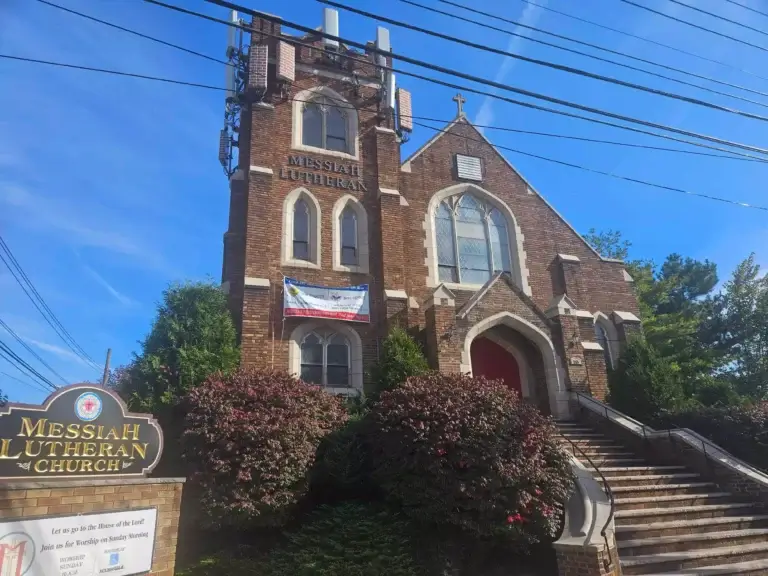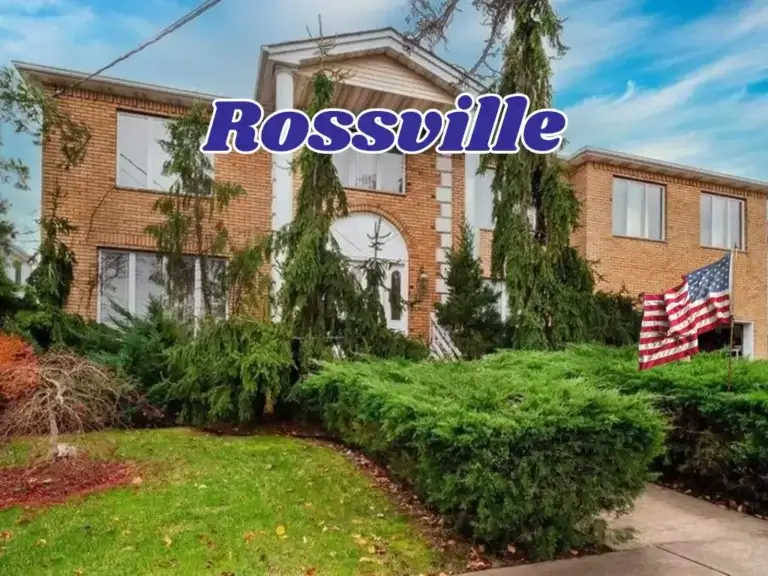Grymes Hill, Staten Island: A Quiet Retreat
Have you ever wondered what makes Grymes Hill one of Staten Island’s unique neighborhoods? Grymes Hill, named after the early landowning Grymes family, offers a rich blend of history, culture, and scenic beauty. This article will take you through the neighborhood’s historical significance, educational institutions, architectural marvels, community demographics, and transportation options.
By reading this article, you will gain a comprehensive understanding of Grymes Hill’s evolution from farmland to an upscale residential area. You’ll learn about the notable landmarks, good schools, and the community’s unique characteristics that make Grymes Hill a special place to visit and live.
What You’ll Learn
- Historical Background: Discover the colonial origins and transformation of Grymes Hill.
- Educational Institutions: Explore the impact of Wagner College and St. John’s University.
- Architectural and Scenic Beauty: Appreciate the elegant homes and breathtaking views.
- Community and Demographics: Understand the diverse and affluent community.
- Transportation: Learn about the public transportation options and commute times.
This article will give you a detailed look at what makes Grymes Hill a noteworthy neighborhood on Staten Island. Whether you are a history enthusiast, a prospective resident, or just curious, this guide will provide valuable insights into Grymes Hill.
Historical Background
Grymes Hill has a rich history that dates back to the colonial era. Initially, the area was known as Signal Hill due to a British signal station located there. It was later referred to as Castleton Heights in deeds from the 1830s. The neighborhood was eventually named Grymes Hill after Suzette Bosque Grymes, who settled on Staten Island in 1836 with her husband, John R. Grymes, a prominent New Orleans lawyer.
In its early days, Grymes Hill was primarily used for agriculture. The fertile land was suitable for farming, playing a crucial role in the local economy. As Staten Island developed, the area transitioned from rural farmland to a residential neighborhood.
During the 19th century, Grymes Hill became an attractive location for wealthy families and prominent individuals. Notable figures such as Sir Edward Cunard, who built a mansion on the hill, contributed to the neighborhood’s development. Cunard’s estate, called “Bellevue,” was also known as Westwood during the family’s residence. These estates, many of which still stand today, reflect the architectural and historical significance of the area.
The transformation of Grymes Hill continued with the establishment of educational institutions. Wagner College, founded in the late 19th century, significantly influenced the neighborhood’s cultural and intellectual landscape. This institution, along with the presence of St. John’s University, marked a turning point in Grymes Hill’s history, blending educational pursuits with residential life.
Overall, Grymes Hill’s historical background is characterized by its agricultural origins, notable landowners, and the establishment of significant educational institutions. This rich history contributes to the neighborhood’s unique identity on Staten Island.
Educational Institutions
Grymes Hill is home to significant educational institutions that have shaped its cultural and intellectual landscape. The two primary institutions are Wagner College and St. John’s University, both of which have a long history in the neighborhood.
Wagner College was established in 1883 and moved to Grymes Hill in 1918. The college has played a crucial role in the development of the area, providing educational opportunities and fostering a vibrant academic community. The campus, located on the hill, offers students picturesque views of the surrounding areas.
St. John’s University acquired its Staten Island campus in 1971. This 16.5-acre campus was originally the site of Notre Dame College, a small Catholic women’s institution. The presence of St. John’s University has contributed significantly to the neighborhood, bringing in a diverse student population and enhancing the educational environment of Grymes Hill.
In addition to these colleges, Grymes Hill is home to other educational establishments such as Notre Dame Academy, a Roman Catholic elementary and high school for girls. This institution has received high rankings for its educational standards and is an integral part of the community.
Moreover, Casa Belvedere, the Italian Cultural Foundation, is located on Grymes Hill. This cultural center offers programs in Italian language and culture and is housed in a historic building listed on the National Register of Historic Places.
These institutions not only provide educational opportunities but also contribute to the cultural richness and community engagement of Grymes Hill.
Architectural and Scenic Beauty
Grymes Hill is renowned for its architectural elegance and scenic beauty. The neighborhood features a mix of historic mansions and modern homes, reflecting various architectural styles that highlight its rich history.
Many of the grand homes on Grymes Hill were built in the 19th and early 20th centuries by wealthy families. Notable examples include the estate built by Sir Edward Cunard, a prominent figure in the shipping industry, whose mansion showcased the Italianate style. These homes often feature expansive grounds and intricate designs, contributing to the neighborhood’s upscale character.
The neighborhood’s elevated position provides residents with stunning panoramic views. From Grymes Hill, one can see iconic landmarks such as the Verrazzano-Narrows Bridge, New York Harbor, and the Manhattan skyline. These views are a significant draw for residents and visitors alike, offering a visual connection to the broader New York City area.
Additionally, Grymes Hill is characterized by its well-maintained green spaces and tree-lined streets, which enhance its scenic appeal. The combination of historic architecture and natural beauty makes Grymes Hill a unique and attractive neighborhood on Staten Island.




Community and Demographics
Grymes Hill is known for its diverse and affluent community. The neighborhood is characterized by a mix of long-time residents and newer arrivals, including a significant number of college students due to the presence of Wagner College and St. John’s University.
Affluence and Income: The area is considered upper-middle income, with residents enjoying a higher income level compared to many other neighborhoods in the United States. This economic stability is reflected in the well-maintained homes and public spaces throughout Grymes Hill.
Diversity: Grymes Hill is notably diverse, with a mix of ethnic backgrounds. The neighborhood has a significant Italian and Arab population, adding to its multicultural character. Additionally, around 12.1% of residents primarily speak Arabic at home, highlighting the linguistic diversity of the community.
Family-Friendly Environment: The neighborhood is considered family-friendly, with a low rate of children living in poverty. Grymes Hill stands out for its safe environment and quality of life, making it an attractive place for families to live.
College Student Population: Due to the presence of major educational institutions, Grymes Hill has a considerable number of college students. This contributes to a vibrant community atmosphere, with various amenities and services catering to students’ needs.
Overall, Grymes Hill’s community is defined by its affluence, diversity, and educational influence, creating a unique and dynamic neighborhood on Staten Island.
Transportation
Grymes Hill is well-served by various public transportation options, making it accessible for both residents and visitors. The neighborhood is connected by several local bus routes, including the S53, S61, S62, S66, S91, and S92, which provide convenient travel within Staten Island.
For those commuting to Manhattan, the Staten Island Ferry is a popular and scenic option. The ferry provides a reliable and direct route to Manhattan, making it a crucial part of the daily commute for many residents.
In addition to the ferry, Grymes Hill is also served by express buses such as the SIM30 and SIM35, which offer rush-hour service to and from Manhattan. These buses provide an alternative for those who prefer a direct ride without transferring between multiple forms of transportation.
Despite the availability of these transportation options, residents of Grymes Hill often face long commute times. A significant portion of commuters travel over an hour each way, which is higher than the average commute time in many other neighborhoods. This factor is an important consideration for those living and working in the area.
Overall, Grymes Hill’s transportation network includes a mix of buses and ferry services, offering various options for commuting and traveling within and beyond Staten Island.
Conclusion
Grymes Hill is a unique neighborhood on Staten Island with a rich history, top-notch educational institutions, and stunning views. It has evolved from farmland to a high-end residential area, featuring historic landmarks and elegant homes. The area is home to Wagner College and St. John’s University, which add to its cultural and academic appeal. With diverse residents and a family-friendly vibe, Grymes Hill combines history with modern living. Did I miss any interesting details about Grymes Hill? Share your thoughts in the comments below!







